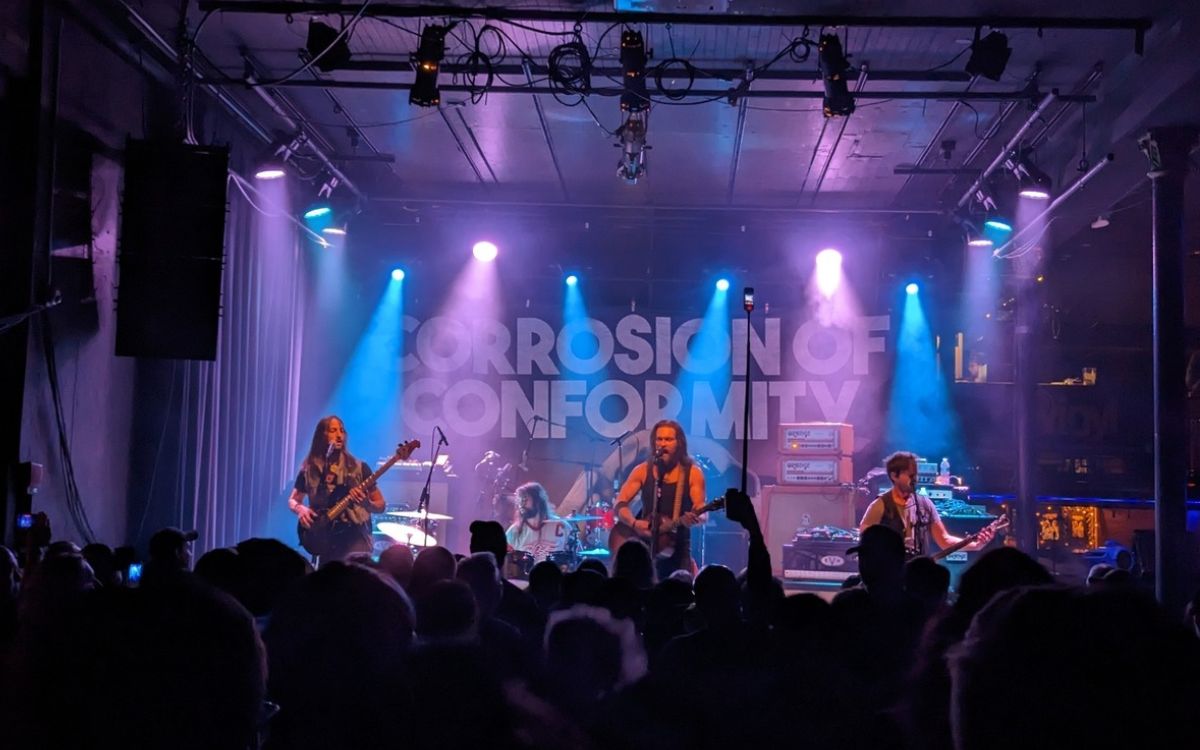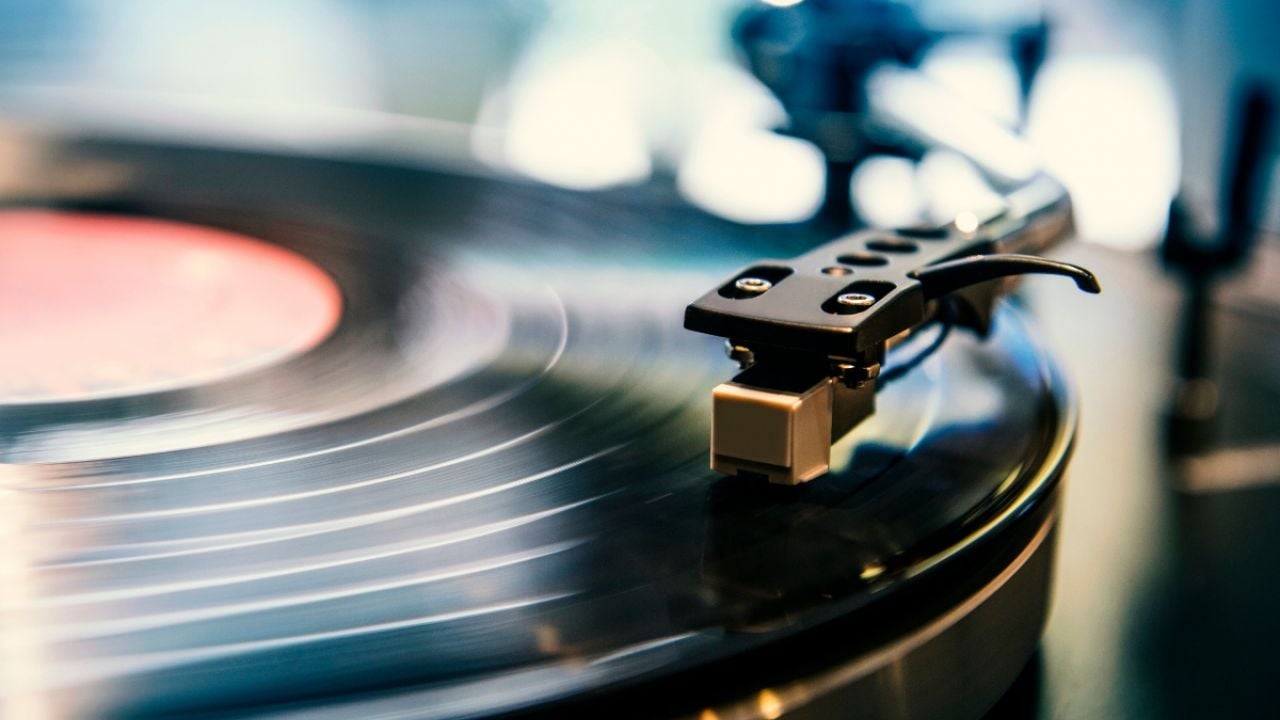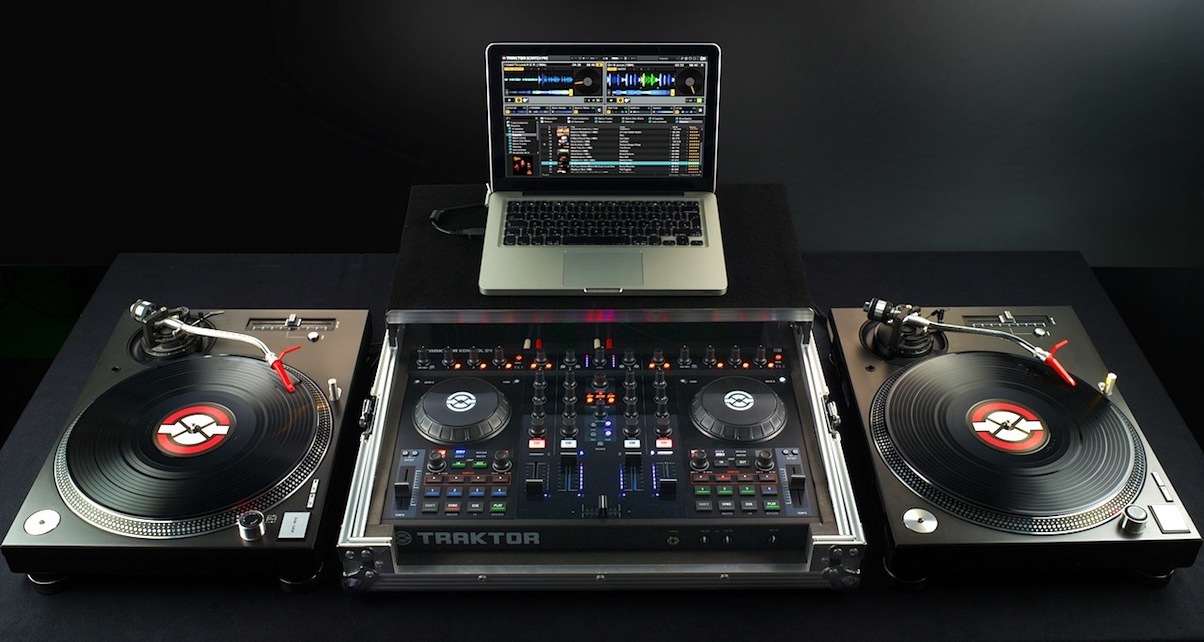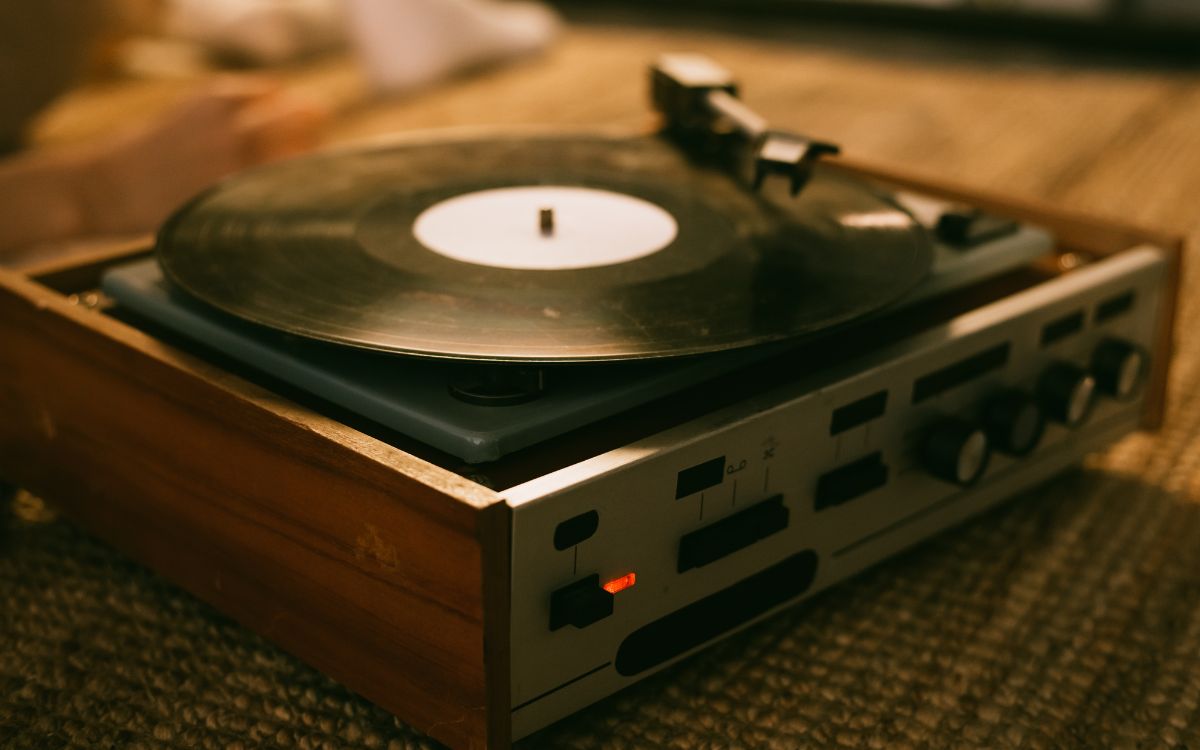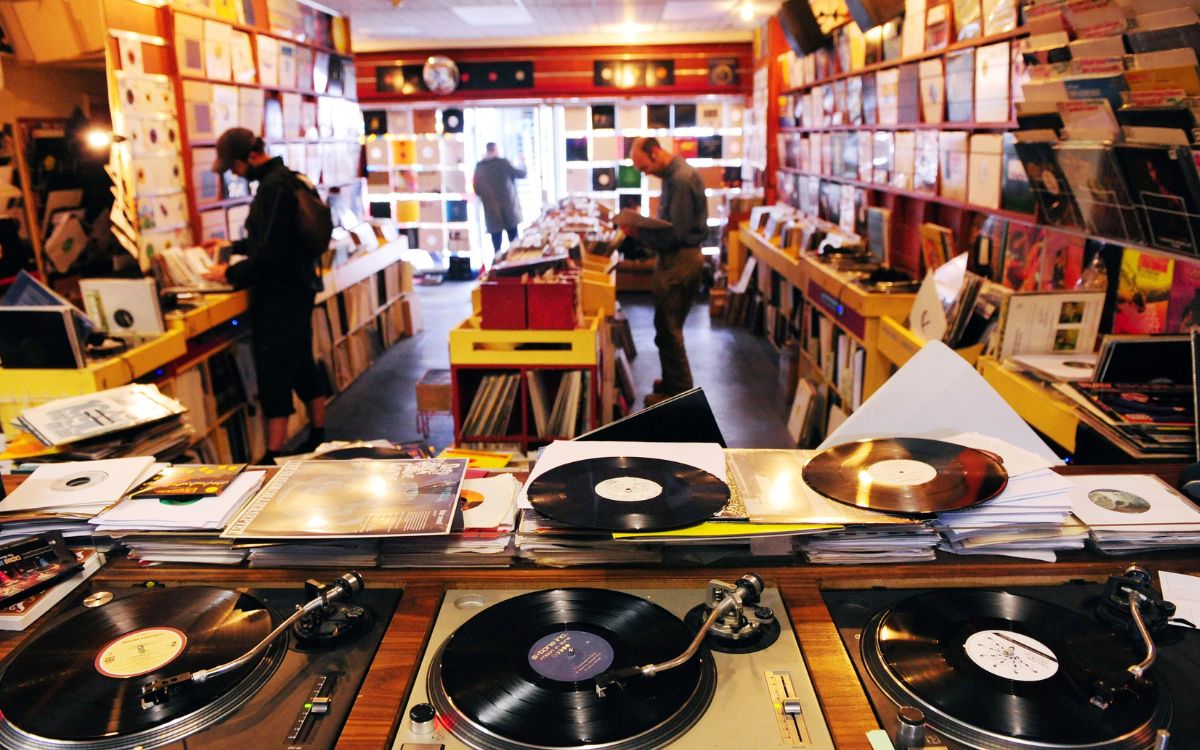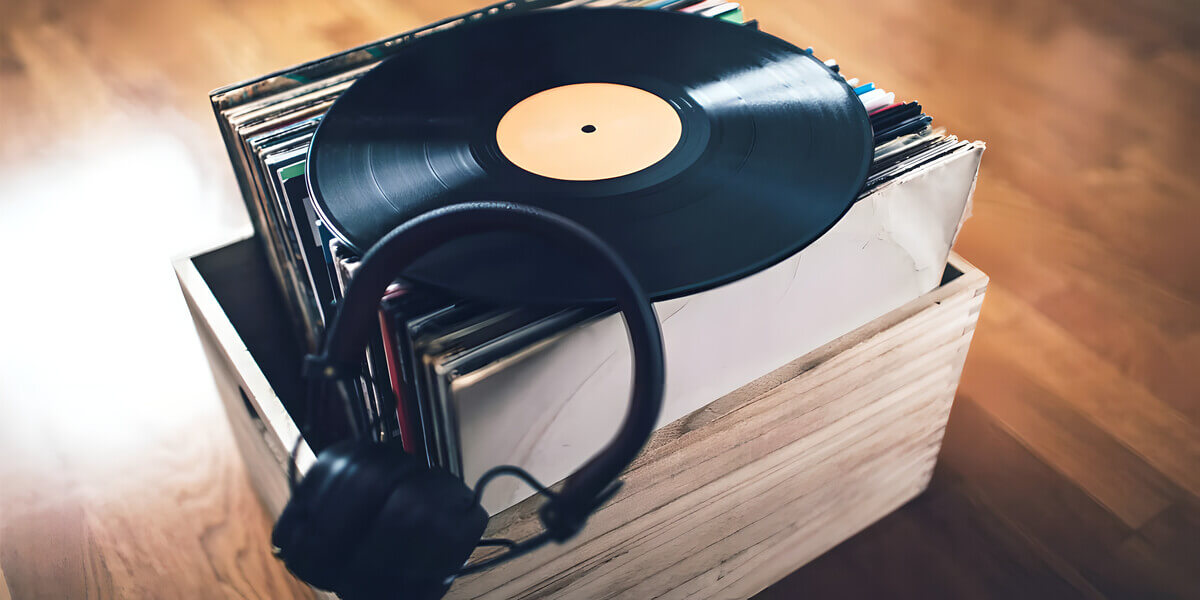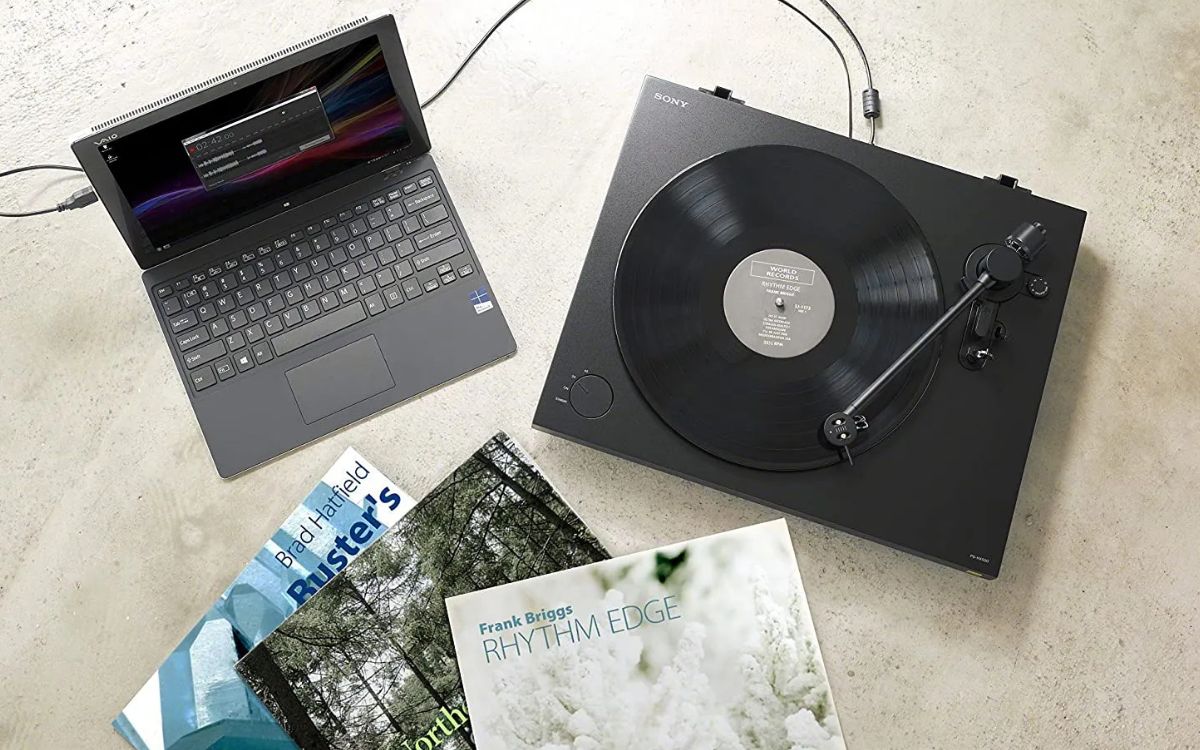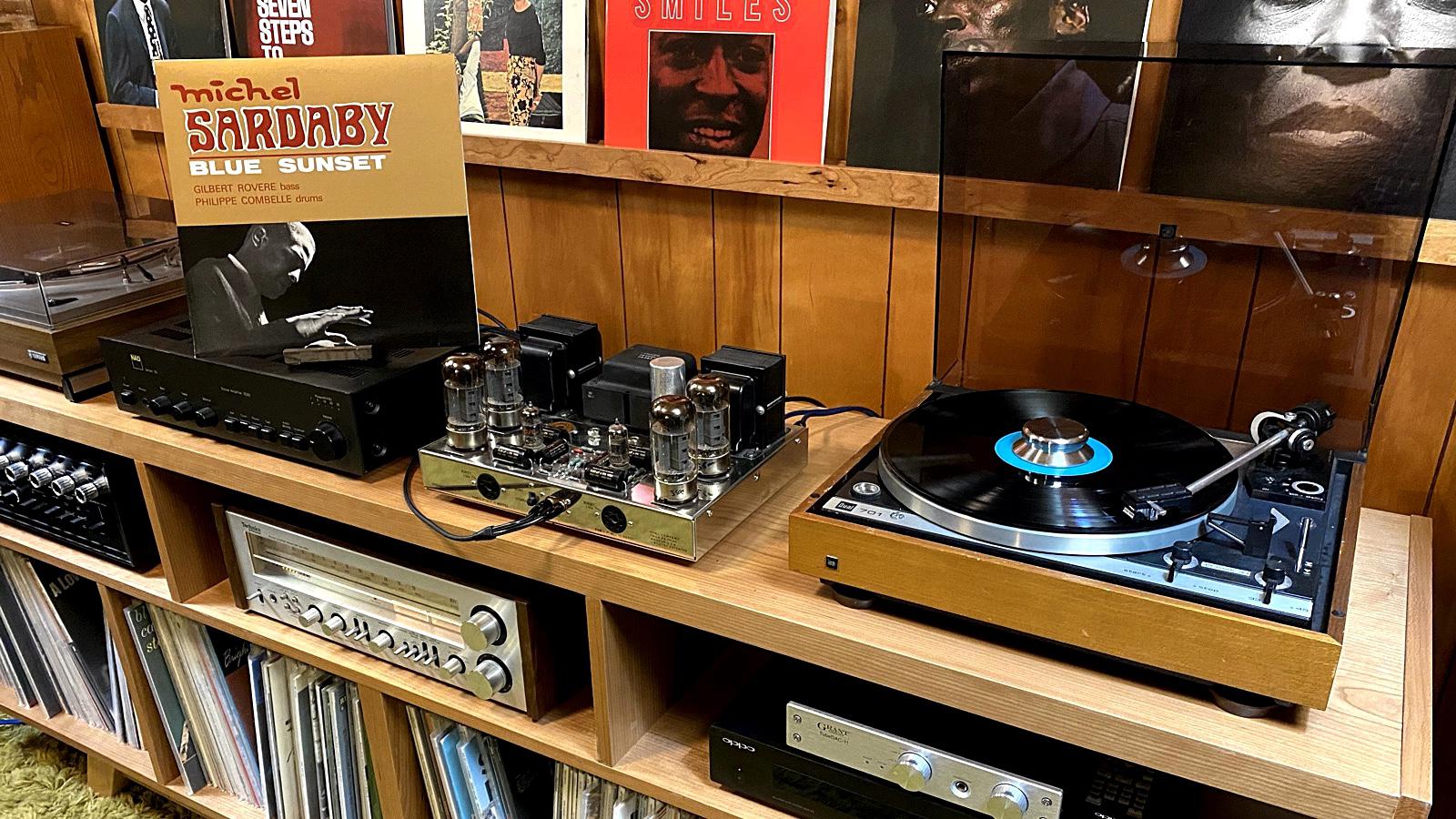Home>Production & Technology>Vinyl>Why Is Music Still Released On Vinyl
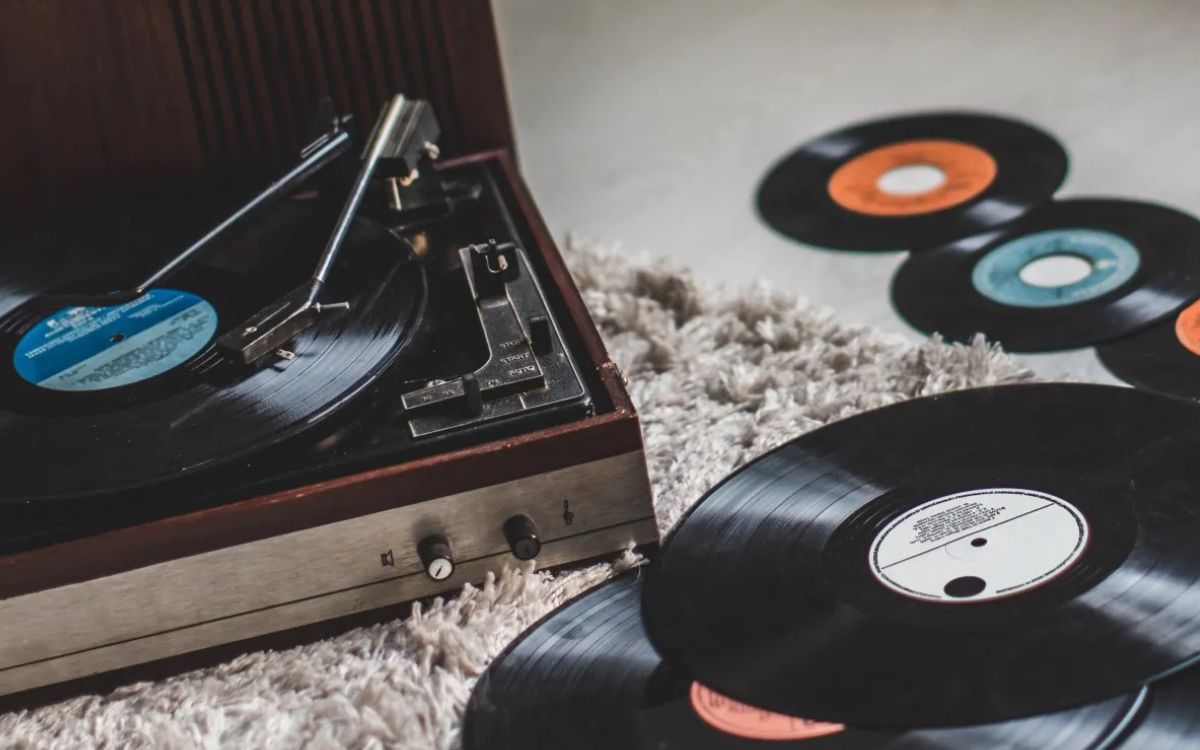

Vinyl
Why Is Music Still Released On Vinyl
Published: December 9, 2023
"Discover why music is still released on vinyl and the enduring appeal of vinyl records. Explore the resurgence of this timeless format in the digital age."
(Many of the links in this article redirect to a specific reviewed product. Your purchase of these products through affiliate links helps to generate commission for AudioLover.com, at no extra cost. Learn more)
Table of Contents
Introduction
Music has always been an essential part of our lives. It has the power to evoke emotions, transport us to different eras, and create a sense of connection with others. As technology advances and music becomes readily available in digital formats, it may come as a surprise that vinyl records, a medium that was once considered outdated, are experiencing a renaissance in popularity.
In this article, we will explore the reasons behind the continued release of music on vinyl and why it remains an integral part of the music industry. We will delve into the historical significance of vinyl records, their appeal as a collectible item, the superior sound quality they offer, their association with nostalgia, their place in the hipster culture, and their ability to thrive in the digital age.
So, why do artists and labels still choose to release music on vinyl? Let’s dive into the fascinating world of vinyl records and find out!
Historical Significance of Vinyl Records
Vinyl records have a long and storied history that dates back to the late 19th century. The invention of the phonograph and the subsequent development of the disc record format revolutionized the way music was recorded and consumed. Vinyl records quickly gained popularity and became the dominant medium for music reproduction until the rise of digital formats in the late 20th century.
One of the key factors contributing to the historical significance of vinyl records is their durability. Unlike their predecessors, such as shellac and wax cylinders, vinyl records offered a more robust and long-lasting medium for playing music. This allowed consumers to build a personal music collection over time, as well as enjoy their favorite songs multiple times without degradation in sound quality.
Moreover, vinyl records played a vital role in the dissemination of music across different cultures and communities. They provided a means for artists and musicians to share their work with a wider audience. From jazz to rock, from classical to hip-hop, vinyl records captured the diverse sounds of various genres and helped shape the musical landscape of different eras.
During the peak of vinyl’s popularity in the mid-20th century, record stores were bustling hubs of music enthusiasts browsing through shelves, discovering new artists, and sharing recommendations. The tangible nature of vinyl records fostered a sense of community and connection among music lovers, creating a unique experience that digital formats often struggle to replicate.
While vinyl records faced a decline in the late 20th century due to the rise of compact discs and digital downloads, their historical significance and cultural impact cannot be overstated. Today, vinyl records not only serve as a nostalgic reminder of a bygone era but also as a testament to the enduring appeal and timelessness of physical music media.
Vinyl Records as a Collectible Item
One of the reasons vinyl records continue to be released and cherished is their status as collectible items. Collecting vinyl records has become a passionate hobby for enthusiasts around the world, creating a vibrant and thriving market for rare and limited-edition releases.
Part of the allure of vinyl record collecting is the hunt for hidden gems. From sought-after albums by iconic artists to obscure releases from underground bands, collectors relish the challenge of finding rare records that add value to their collections. This quest often involves scouring record stores, attending flea markets and thrift shops, and even connecting with other collectors through online communities.
The collectability of vinyl records is also fueled by their inherent uniqueness. Each record is a tangible piece of art, featuring cover artwork and liner notes that showcase the creativity and vision of the artist. Limited-edition pressings, colored vinyl variants, and special packaging further enhance the collectability factor, making certain releases highly coveted and prized among collectors.
Furthermore, vinyl records have an enduring appeal that transcends generations. Many collectors are drawn to the nostalgia and history represented by vinyl, as it evokes a sense of authenticity and connection to the past. Owning a vinyl record allows one to experience music in a way that feels more intimate and immersive than streaming or digital downloads.
The collectability of vinyl records is also closely tied to their potential for investment. Rare and highly sought-after records can appreciate in value over time, especially when well-preserved and in excellent condition. This aspect of vinyl record collecting adds an exciting element of financial speculation for some collectors.
Overall, vinyl records serve as both a tangible form of music and a valuable collectible item. The thrill of the hunt, the aesthetic appeal of physical media, and the potential for investment all contribute to the enduring appeal of vinyl as a collectible medium.
Superior Sound Quality of Vinyl
One of the key reasons music is still released on vinyl is the superior sound quality it offers. Vinyl records have a distinct warmth and depth that many audiophiles and music enthusiasts find appealing. This can be attributed to the analog nature of the format, which captures sound waves in a continuous manner.
Unlike digital formats that use compression and sampling techniques to convert sound into binary code, vinyl records reproduce sound by physically etching grooves onto the surface of the record. This analog process allows for a more faithful representation of the original recording, preserving the nuances, dynamics, and overall richness of the sound.
The nostalgic crackles and pops that often accompany vinyl playback contribute to the charm and authenticity of the experience. They are a reminder of the analog nature of the medium and can even enhance the perceived warmth and character of the music.
Moreover, vinyl records often offer a wider frequency range compared to their digital counterparts. This means that subtle details, such as instrument overtones and vocal textures, can be more accurately reproduced, providing a more immersive and engaging listening experience.
Another factor contributing to vinyl’s superior sound quality is the format’s ability to handle higher levels of dynamic range. This means that vinyl records can faithfully reproduce both the softest whispers and the loudest crescendos without distortion, resulting in a more dynamic and realistic soundstage.
It’s worth noting that achieving the optimum sound quality from vinyl records requires proper care and maintenance. Regular cleaning, ensuring a quality turntable and cartridge setup, and using high-quality speakers or headphones are all crucial factors in maximizing the audio fidelity of vinyl playback.
While digital formats offer convenience and portability, vinyl records provide a listening experience that is characterized by its warmth, depth, and authenticity. For those who prioritize sound quality and appreciate the nuances of music, vinyl remains a medium that is unmatched in its ability to deliver a truly engaging and immersive sonic experience.
Vinyl Records and Nostalgia
Vinyl records have a unique ability to evoke a sense of nostalgia and connect listeners to specific memories and emotions. Many people associate vinyl with a time when physical music collections and record players were the primary means of enjoying music.
For older generations, vinyl records symbolize a bygone era of simpler times and cherished music listening rituals. The act of carefully selecting a record, gently placing it on the turntable, and carefully lowering the stylus creates a tactile and immersive experience that engages multiple senses. This nostalgia is further enhanced by the artwork, liner notes, and the physical presence of the record itself, which all contribute to the overall sensory experience of vinyl.
Even for younger generations who may not have experienced vinyl during its heyday, the format still holds a certain appeal due to its association with the past. Vinyl’s resurgence in popularity has sparked a curiosity and interest in discovering the classic albums and artists that defined previous decades.
Furthermore, vinyl records provide an opportunity to bridge generational gaps and share musical experiences. Parents and grandparents can pass down their cherished vinyl collections and introduce younger family members to the music that shaped their own lives. This intergenerational connection adds an emotional element to the act of listening to vinyl records, creating cherished memories and fostering a sense of shared history.
Nostalgia for vinyl records also extends beyond individual experiences and memories. The format represents a cultural touchstone that elicits images of record stores, crate-digging, and the vibrant music scenes of the past. The resurgence of vinyl has also revived interest in record fairs, where music enthusiasts can browse through stacks of records, make new discoveries, and engage in conversations with like-minded individuals.
In a fast-paced digital world, vinyl records offer a tangible and authentic experience that taps into our yearning for a connection to the past. Nostalgia, in all its sentimental glory, continues to be a powerful driving force behind the enduring appeal of vinyl records.
Vinyl Records and the Hipster Culture
Vinyl records have become synonymous with the hipster culture, a subculture characterized by its emphasis on individuality, authenticity, and embracing everything retro. The hipster movement has played a significant role in the resurgence of vinyl’s popularity in recent years.
For many hipsters, collecting vinyl records is not just about the music but also about embracing a unique aesthetic and lifestyle. Vinyl records are seen as a way to rebel against the mainstream and stand out from the crowd. Owning a vinyl collection can be viewed as a statement of individuality and a way to express one’s taste in music.
The physical nature of vinyl records also aligns with the hipster ethos of appreciating craftsmanship and the “old-fashioned” way of doing things. The act of flipping through record store racks or displaying vinyl records on shelves is seen as a deliberate rejection of the digital age’s intangible nature.
In addition, vinyl records fit well with the hipster inclination to seek out obscure and lesser-known music. Collecting vinyl allows hipsters to dive into the depths of music history, discover forgotten gems, and support independent artists and labels.
Beyond the music itself, vinyl records and their associated paraphernalia, such as vintage turntables and speakers, are often seen as fashionable and nostalgic elements of home decor. Displaying a well-curated vinyl collection can be a way for hipsters to create a visually appealing and uniquely personal space.
It’s important to note that while vinyl records are associated with the hipster culture, their appeal extends far beyond this subculture. People from all walks of life appreciate the tactile experience, unique sound quality, and nostalgic appeal of vinyl. However, the hipster movement’s embrace of vinyl records has undeniably contributed to their increased popularity in recent years.
Regardless of one’s perspective on the hipster culture, it’s clear that the movement has played a significant role in bringing vinyl records back into the mainstream consciousness and creating a renewed appreciation for this beloved analog format.
Vinyl Records and the Digital Age
In an era dominated by digital music streaming and downloads, the continued release and popularity of vinyl records may seem like a counterintuitive trend. However, vinyl has found its place in the digital age and coexists with digital formats in the music industry.
While digital music offers convenience and instant access to an almost unlimited library of songs, vinyl records provide a different kind of music listening experience. They offer a tangible and physical connection to the music, allowing listeners to engage all their senses in the act of playing a record.
Vinyl records also provide a respite from the overwhelming amount of digital content available. In a world where music can be accessed with a few clicks or swipes, vinyl records demand a more deliberate and intentional listening experience. This intentional listening encourages active engagement with the music, fostering a deeper appreciation for the artistry and craftsmanship involved in its creation.
Additionally, vinyl records serve as a form of rebellion against the disposable nature of digital music. While digital files can be easily deleted or forgotten, vinyl records demand to be cared for and cherished. The process of selecting a record, carefully placing it on a turntable, and actively listening to it creates a sense of ritual and mindfulness that is often absent in digital music consumption.
The vinyl resurgence has also prompted many artists and labels to release exclusive or limited-edition vinyl versions of their albums. This marketing strategy not only appeals to vinyl collectors but also provides a tangible and exclusive product for fans and supporters. Vinyl releases often come with bonus content, such as lyric booklets, posters, or digital download codes, creating a hybrid music experience that combines the best of both analog and digital worlds.
Moreover, the vinyl revival has fueled the growth of independent record stores and local music scenes. These physical spaces offer a sense of community and allow music lovers to discover new artists, attend live performances, and engage in conversations about music. Vinyl releases, in turn, serve as a source of revenue for independent artists, enabling them to continue creating and sharing their music.
While digital music remains dominant, vinyl records have carved out their own niche in the digital age. They provide a connection to the past, a break from the digital overload, and a more intentional and immersive listening experience. Vinyl’s resilience and continued presence in the music industry are a testament to the enduring appeal of physical media in a world increasingly dominated by digital technologies.
Vinyl Records’ Resurgence in Popularity
In recent years, vinyl records have experienced a remarkable resurgence in popularity, defying the expectations of many who considered the format outdated. This revival can be attributed to a combination of factors that have reignited interest in vinyl and brought it back into the mainstream.
One of the key drivers behind vinyl’s resurgence is the growing appreciation for its unique characteristics and tangible nature. As digital music became the norm, many music enthusiasts began to yearn for a more immersive and tactile music experience. Vinyl records offer a physical connection to the music, allowing listeners to engage with the artwork, liner notes, and the act of physically placing a needle on the spinning record.
The resurgence of vinyl is also fueled by a desire for authenticity and a return to analog technology. In an era of digital replication and streaming, vinyl records offer a genuine and authentic way to experience music. The warmth, depth, and crackle of vinyl playback create a nostalgic and organic sound that cannot be replicated by digital formats.
Furthermore, vinyl records have become a symbol of rebellion against the digital age’s intangible and disposable nature. Collecting vinyl is seen as a statement of individuality and a rejection of the homogenization of popular music. In a world of endless digital playlists and algorithm-based recommendations, vinyl offers a curated and personal music listening experience.
The resurgence of vinyl can also be attributed to the rise of the independent music scene. Many independent artists and labels have turned to vinyl as a medium to release their music, connecting with fans on a more personal level and tapping into the growing interest in physical media. The limited-edition vinyl releases, often accompanied by exclusive artwork and bonus content, create a sense of exclusivity and value for collectors and fans.
Additionally, the growth of social media and online communities has played a significant role in promoting vinyl’s resurgence. Vinyl enthusiasts are able to connect through forums, blogs, and social media platforms, sharing their collections, recommendations, and discoveries. This online presence has further fueled the vinyl revival and created a sense of community among collectors and music lovers.
It’s important to note that vinyl’s resurgence goes beyond a mere trend. The continued growth in vinyl sales and the increasing number of new releases on the format indicate a sustained interest and demand for vinyl records. Record store sales have also seen a significant increase in recent years, further solidifying vinyl’s place in the music industry.
Despite the convenience and accessibility of digital music, vinyl records have carved out a unique and enduring niche. Their resurgence is a testament to the enduring appeal of physical media, the desire for a more immersive music experience, and the yearning for authenticity in an increasingly digital world. Vinyl records continue to capture the hearts of music lovers and prove that sometimes, the old ways are still the best.
Conclusion
Vinyl records have proven their staying power in the ever-evolving music industry. Despite the rise of digital formats and the convenience they offer, vinyl has maintained its allure and continues to captivate music enthusiasts around the world.
From its historical significance to its status as a collectible item, vinyl records hold a special place in the hearts of music lovers. The superior sound quality, the ability to evoke nostalgia, the association with the hipster culture, and their coexistence with the digital age have all contributed to vinyl’s resurgence in popularity.
Vinyl records offer an experience that extends beyond the act of listening to music. They provide a tangible connection to the past, fostering a sense of nostalgia and bringing back memories of simpler times. Vinyl’s physicality, from the artwork to the act of handling and playing a record, creates a sensorial experience that digital formats struggle to replicate.
The vinyl revival has also created a sense of community among collectors and music enthusiasts. Record stores, vinyl fairs, and online communities have become gathering places for like-minded individuals to share their love for vinyl and discover new artists and releases.
In conclusion, the resurgence of vinyl records is a testament to the enduring appeal of physical media and the desire for a more immersive music listening experience. Vinyl records have transcended being a mere format and have become a symbol of authenticity, individuality, and the appreciation for the artistry and craftsmanship of music.
While digital music continues to dominate, vinyl records have carved out their own niche and have proven to be more than a passing trend. They offer a unique and cherished music experience, bridging generational gaps and serving as a tangible link between the past and the present.
So, whether you’re a seasoned vinyl enthusiast or a curious newcomer, take the time to experience the magic of vinyl records and discover the joy of holding music in your hands.

